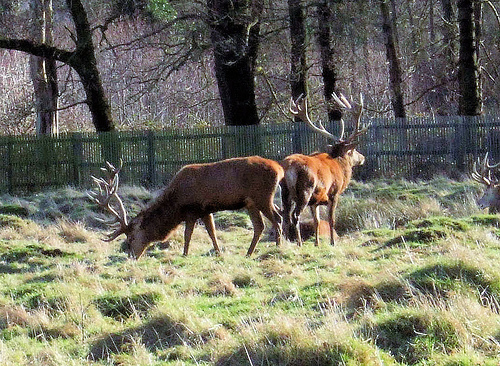The History of Bushy Park
Bushy Park, though the name may not be instantly recognisable, is actually the second biggest Royal Park located in the city of London. Though the name of the park may mean little, you will be aware of one of the attractions that the park contains that attracts countless visitors every year, namely the Princess Diana Memorial Fountain. The park is situated close to Hampton Court Palace and has everything that you could want from an oasis of green in the heart of one of the biggest cities in the world. Here you will discover rich woodland, tranquil ponds and rolling grasslands complete with free roaming Fallow and Red Deer.

Royal Links
The Diana Fountain is located in Chestnut Avenue, which is an attraction in its own right. The avenue was the brainchild of Sir Christopher Wren and was created to form a formal entrance into the park during the reign of William and Mary. The most impressive view of this unique feature of the park is achieved from the Teddington Gate. During the First World War, King George gave permission for park of the park to be turned over to farmland as part of the ‘Dig for Victory’ incentive, as well as permitting the Upper Lodge to be converted into a convalescent home for Canadian servicemen. The link to the Canadian forces has never been forgotten and the totem pole that stands in the Waterhouse Woodland Gardens as well as the Canadian Glade is testament to the continued link with Canada.
Bushy Park was again used for the production of food during World War II, while another area of the park became a base of operations for the U.S. forces as well as several Allied departments. However due to President Eisenhower’s concerns about the base being bombed, based as it was in the centre of London, he withdrew and instead the base became the centre of operations for the Allied Expeditionary Force and was where ‘Operation Overlord’ otherwise known as the D-Day landings were planned.
Before The Park
Before the park was created it is believed that the land had been the site of some form of settlement for at least the last 4,000 years. There is evidence that backs up this claim as a Bronze Age burial mound was excavated on the site, the artefacts from which are now on display in the British Museum. There is also plenty of other evidence, as remains of several medieval settlements are located around the park, with the best examples to be found just to the south of the Waterhouse Woodland Gardens.
Bushy Park has had something of a varied history as it has been the site of medieval settlements and farmland, a deer park throughout Tudor times, water gardens during the 17th century through to being home to military bases, camps and a convalescent home. Today you can still see evidence of medieval farming – the artificial rabbit warrens that were created during the middle ages to farm rabbits for food, especially at Warren Plantation. There is much more to this Royal Park than just open space.

